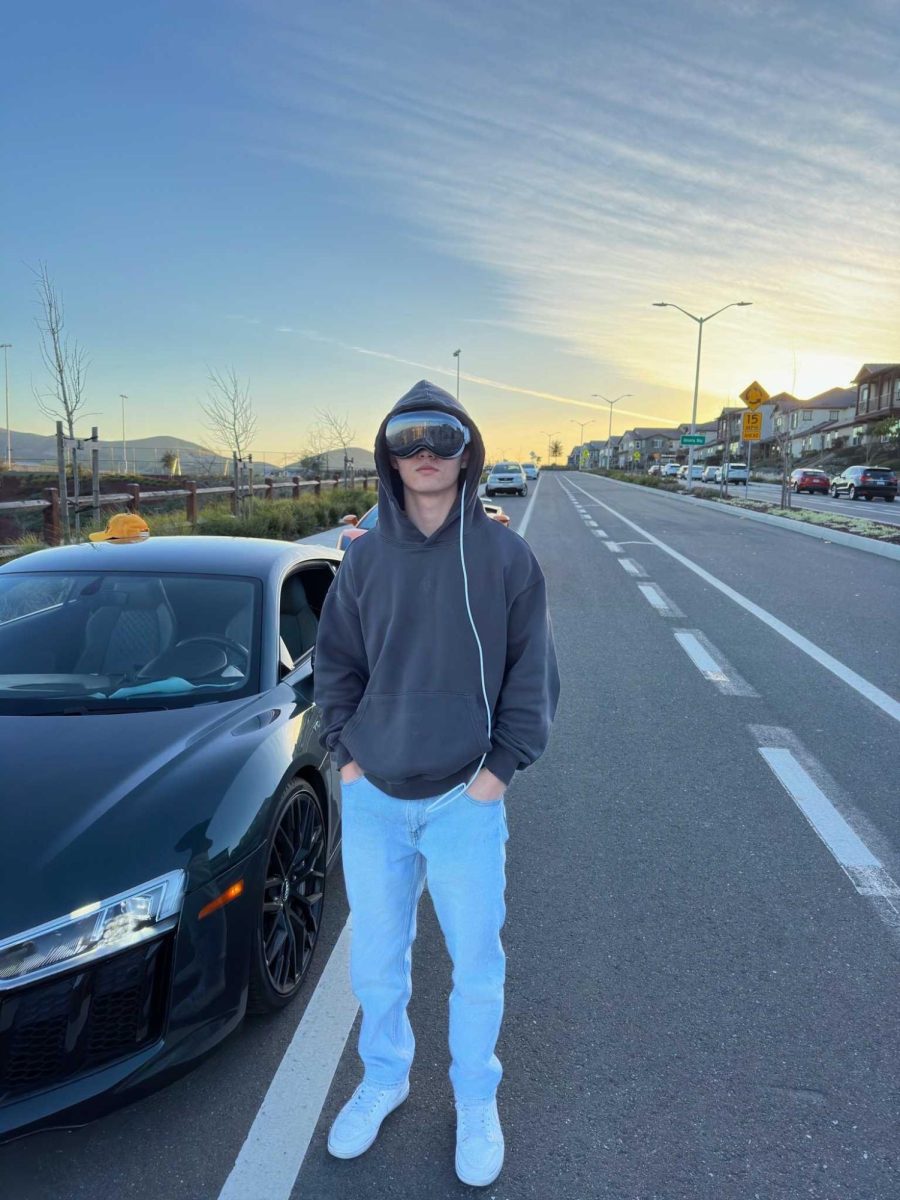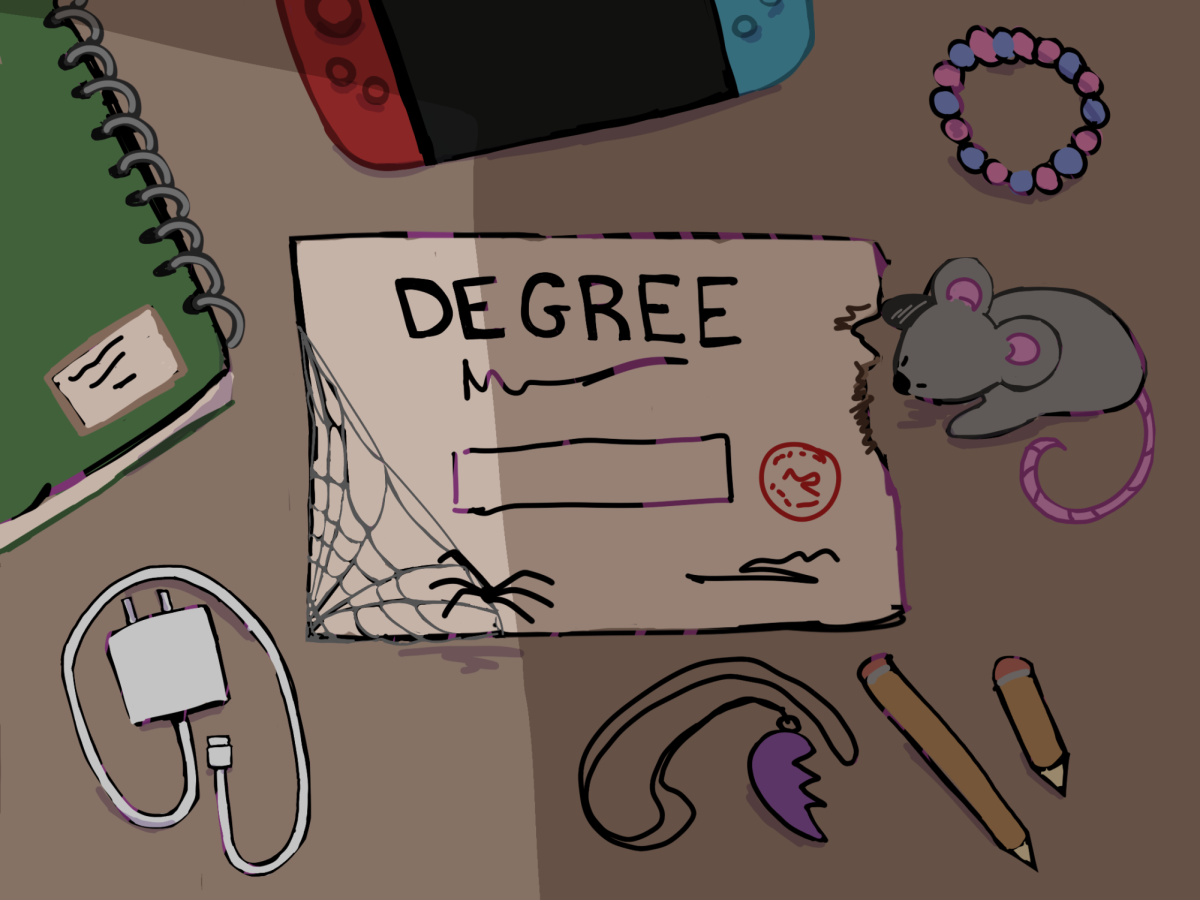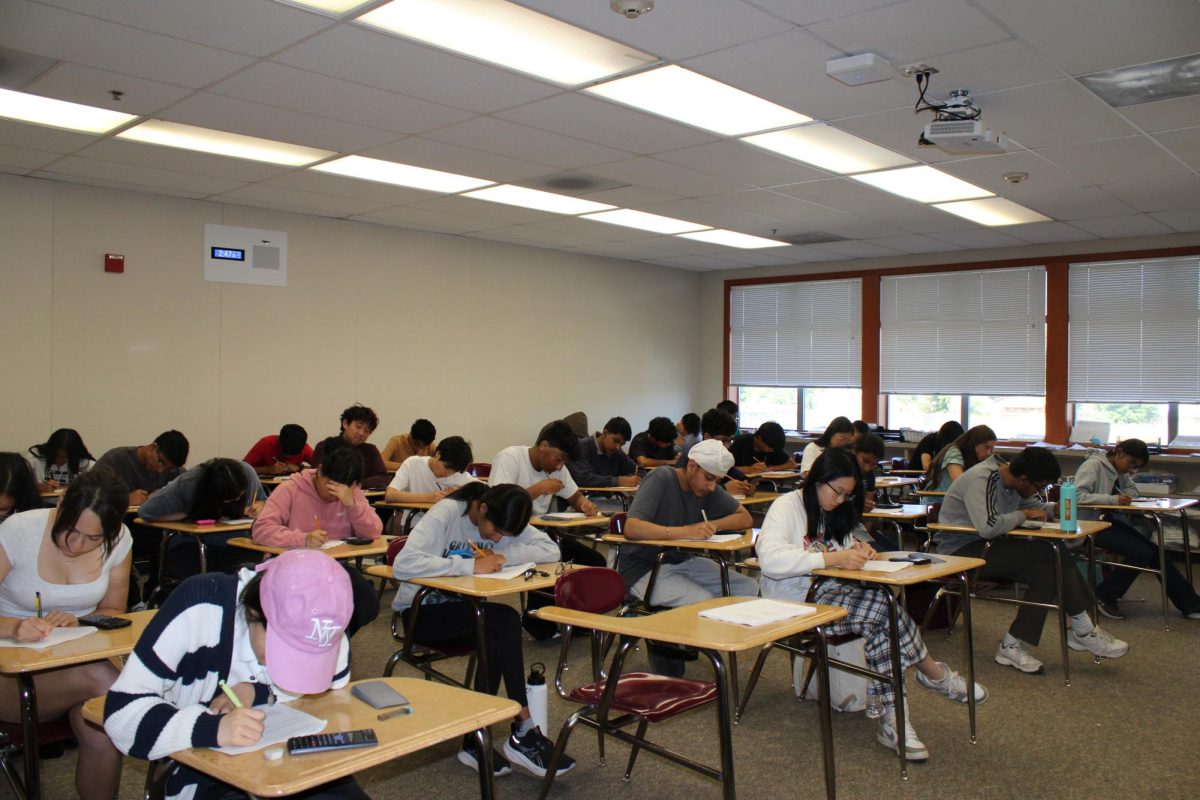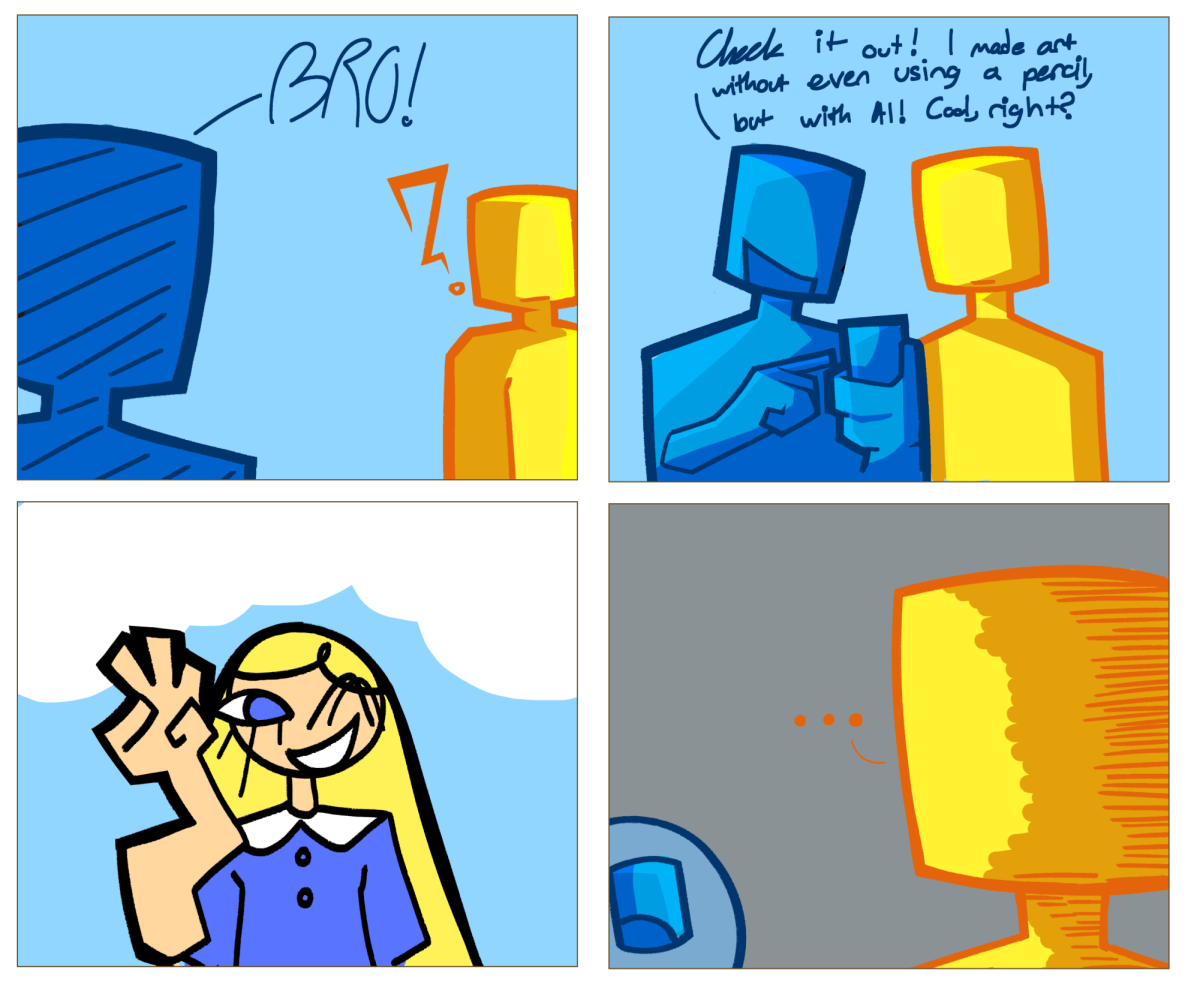The future shown in retro TV shows seems to become more real every single day.
Technologies such as Apple Vision Pro are being pushed as a new integral part of lives.
Is this the future of the modern world? It appears the newest technology to make modern devices obsolete are VR wearables.
The Apple Vision Pro is a $3,500 VR/AR headset described by Apple as “spatial computing.” Unlike past headsets, such as the Meta Quest series, it combines the virtual and physical worlds.
With the Vision Pro, apps and windows can be suspended above the user’s desk, acting as extra and bigger screens for a computer. Watching TV shows and movies and playing video games is a home theater experience on one device. Apple describes the video quality to be greater than a 4K TV for each eye. As the “screens” are projected from the headset, they can be large without compromising quality.
Spatial audio further immerses users in the experience. During flights or long road trips, a completely different world is open to exploration. The Vision Pro can also view spatial photos and videos, allowing users to “step back” into the past.
The Apple Vision Pro pushes the limits of electronics from their finite size to the infinite size of the world. Technology companies will no longer have to research and develop new larger and higher quality screens. They will simply have to create faster and more powerful chips.
There’s no limit to what can be produced in a VR headset.
Nevertheless, new technologies have always triggered pushback. For example, when the mobile phone was first released, critics were skeptical of its future. In Sweden, the telephone was seen as “the instrument of the devil.”
This skepticism goes back centuries. Electricity was also seen as unnatural for people to use. Some believed the airplane was just a fad and would never work commercially on a large scale. People later feared that 5G waves would cause cancer and other bodily harm.
The Vision Pro’s biggest criticism is that it takes away from the natural interactions of people. It continues to push the virtual world into the forefront and makes people lose face-to-face contact with others.
The Internet faced similar concerns back in the early 2000s.
Not many believed the Internet would become the future of mankind and one of the most essential parts of society. The same will happen with VR technology.
Additionally, skeptics forecasted that computers and smartphones would take away society’s humanity, and no one would interact in real life any longer. This clearly isn’t true as phones and computers only make communication easier over distances and real-life interactions are still a main form of communication.
New technologies tend to start imperfectly. Right now, the Vision Pro is described by The New York Times as “lacking polish and purpose.” But if you compare the Wright brothers’ plane to a modern airplane, it seems impossible how a massive metal structure stays up in the air.
In 40 years, from the Motorola DynaTAC of 1983 to the iPhone 15 Pro of 2023, phones have grown smaller and slimmer while becoming much cheaper and exponentially more powerful and capable.
It seems natural that these advances will occur for VR headsets in the future. Taking advantage of the exponential growth of computing power, VR headsets could size down to glasses, even contact lenses. Using the Vision Pro right now in public is awkward and unnatural. When the eventual compacting of VR comes, it’ll be much more common.
It will also be much cheaper as increased production allows prices to go down.
Predicting how new technologies will change the future is difficult. Trying to shape new technologies’ uses is even harder. Society will integrate modern VR technology gradually, helping it become less noticeable as time goes on.
Apple Vision Pro is a key step toward the future
Vihaan Tigadikar, Social Media Editor
March 28, 2024
Ethan Sun wears the new Apple Vision Pro, a mixed-reality headset that is priced at $3,500.
More to Discover
About the Contributor

Vihaan Tigadikar, Social Media Editor
Junior Vihaan Tigadikar is the Social Media Editor of The Californian Paper. Vihaan plays for the Cal High team and his club 680 Drivers WP. Vihaan does multiple extracurriculars like Mock Trial, MUN, Science Bowl/Olympiad, and more. He hopes to major in astrophysics and theoretical particle physics at his dream college, Harvard. In his free time, Vihaan likes playing soccer & hanging out with his friends, playing FIFA with his brother, and watching science videos.



